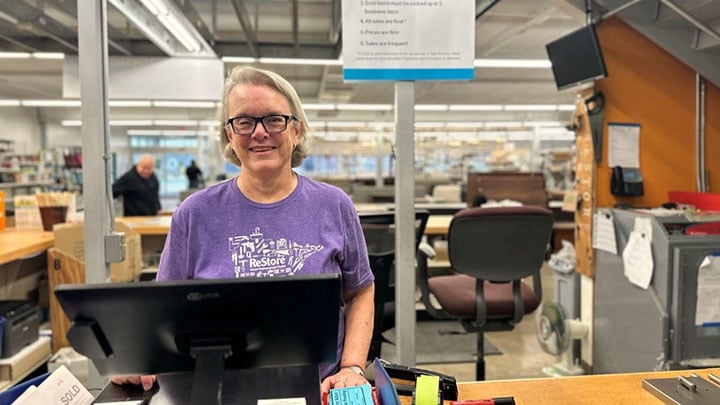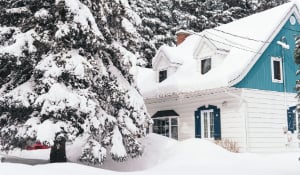ReStore Recap: Giving Back, DIY Firepits, and More
Looking for creative ways to get ready for the warm weather that is coming our way? This edition of the Restore Recap has plenty of ideas, including...

Late summer in Minnesota brings heat, cicadas, and humidity. The average humidity in Minnesota is typically highest from September to February, between around 69.5% to over 74%. More moisture in the air means it’s more likely that you’ll find some mold growth in your home.
Molds are a type of fungus that—when outdoors—play an important role in the natural environment and the cycle of life. Mold spores float through the air both indoors and outdoors and spores usually don’t cause problems indoors unless they grow, which requires three simple conditions:
When mold does grow indoors, it can cause allergic responses, asthma attacks, and eye and skin irritation. Untreated mold growth can also cause damage to your home. This is why when you smell or see mold, it’s important to treat it right away.
So how can you tell if you have mold growth in your home? Keep an eye out for these signs of excess moisture or mold:

You may find signs of excess moisture under sinks, on ceilings (indicating a leak on the floor above), behind furniture, or behind/beneath building materials such as carpeting or wallpaper.
Mold testing is something you may hear about but is not usually recommended for homeowners, since it is expensive, and there are no health-based standards for mold levels in the air. A good visual inspection is considered the standard for identifying mold in a home.
A good way to prevent mold from growing in your home is to repair leaks and spills as quickly as possible—within 24-48 hours. The longer that mold grows on a surface, the more likely it will be to cause damage.
Periodically check your plumbing, gutters, air conditioner drain lines, and sump pumps to ensure there are no leaks and that there are no obstructions. Check spaces like attics, crawl spaces, and foundations for signs of moisture or mold. Ensure that the ground on your property slopes away from the foundation, so water doesn’t pool or enter the building when it rains or snows.
Try to keep your home’s relative humidity between 30-50% by:
It’s worth noting that it can be difficult to keep bathrooms completely free of mold, since they are frequently damp. Cleaning more frequently and increasing ventilation will help keep mold from becoming a problem.
When Twin Cities Habitat for Humanity purchases a home to renovate, the teams with our A Brush With Kindness home repair program take several steps to address mold and make sure your home is healthy and ready for move-in. "Our goal is always to address the underlying cause of the mold so it doesn’t re-occur," says A Brush With Kindness Program Manager Mike Robertson. "That usually means providing a dehumidifier for a damp basement or installing a vent-fan in a bathroom."
Before cleaning any mold growth in your home yourself, the Minnesota Department of Health recommends you limit your exposure by wearing protective equipment.

A Brush With Kindness uses similar methods to the ones listed below to treat mold on properties purchased for renovation. "We’re able to address minor surface mold issues on our projects by using a 50/50 mixture of bleach and water," says Mike. "Deeper mold issues that have gotten into the wall framing or insulation are too hazardous for us to manage safely, so we either refer clients to a different organization like the Sustainable Resource Center or we hire a licensed remediation contractor to handle the work."
Note: If you discover more than around 10 feet of mold or it has gotten into the walls, you should not try to treat the mold on your own.
Below are some steps for treating smaller amounts of mold yourself:
Regardless of whether you live in a home that's brand-new or has a few years behind it, mold and moisture can become issues no matter where you live. Using these tips, you can keep your home dry and healthy all year long.
Your gift unlocks bright futures! Donate now to create, preserve, and promote affordable homeownership in the Twin Cities.

Looking for creative ways to get ready for the warm weather that is coming our way? This edition of the Restore Recap has plenty of ideas, including...

There are several things you can do to winterize your home and ease the financial toll of winter. Some of them cost money upfront, but you’ll save...

You've helped make ReStore so successful! We want to thank you for all the support you provide, whether by shopping, volunteering, or donating. Make...